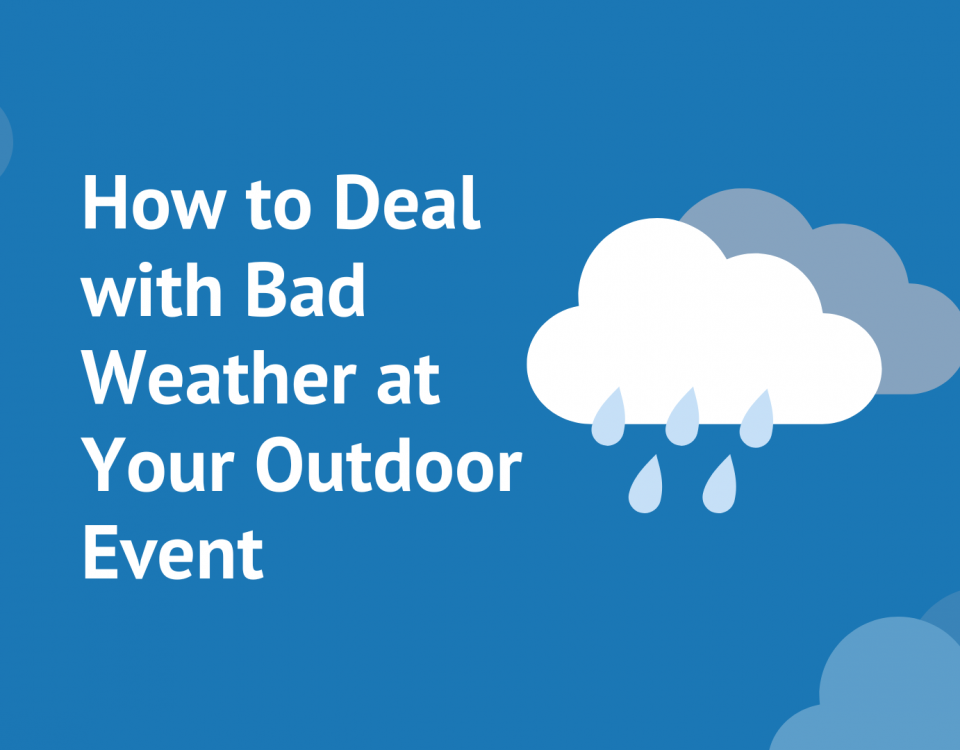
7 Fall Event Ideas That People Will Actually Like
October 5, 2022
How to Deal with Bad Weather at Your Outdoor Event
December 5, 2022Right now, there is a major trend of getting back to in-person events. Whether you are looking for local networking opportunities or events focused on specific areas of your business, there is an event for every niche. As event planners steer back into planning in-person events, here are some reminders and tips that you should remember when planning your in-person event.
It is important to have valuable topics
With any type of event, you have to remember who your audience is and what you are hoping to get out of this event first. Getting specific will help you choose the types of content and speakers you will be sharing during your event.
Include a bit of downtime in the agenda.
As event planners, we may want to jam-pack the whole event with speakers and different types of presentations to our audience. Although those are important factors in creating an amazing event, we also want to leave some downtime between those sessions. Creating a space and time for attendees to socialize, as well as network with other attendees will really show that you care about the attendee’s experience!
Plan ahead for the small details
There are always details of an event that may be left at the bottom of the list, or worse forgotten. We’ve added below some of the most common details that are sometimes overlooked when planning your in-person event.
Make sure you have a clear cancellation policy
Whatever your cancellation policy will be, (no refunds, full refund etc.) make sure to include it and have it fully visible on your registration page, as well as any places it may be needed, for example, registration emails.
Schedule extra time for Q&A
Although we may set a time for a Q&A, it might not be enough. Have extra time available if speakers or discussion runs longer than planned.
Have Your Event Check-In Staff Trained
Long lines and constant hiccups at registration give attendees a first impression that’s not so hot. Pick out an event check-in tool that’s easy to use and schedule a time to get your registration staff familiar with it before event day.
Be on the same page as security and staff
With virtual events surfacing in the last couple of years, security has become an afterthought. Make sure that they are in the loop about how the event will unravel. You’ll want to check in with your security and event staff so you are all on the same page on the day of your event.
Establish team communication pathways: There’s no reason to deal with layout version confusion or neverending hunts for the right email thread these days. Use project collaboration tools, such as Slack or Trello, and give team members access to your event layout tool, so everyone has the latest version.
Make sure to practice a dry run first.
Before the day of your event, have a full run-through of your event with staff, speakers, the audiovisual team and anyone else involved in your event. Also, include a full tech check and check on any other elements that are included in your event. Presentation skills are important, so if you can’t present confidently without it looking like you’re winging it, then don’t do it!
Be in touch with your vendors, sponsors and volunteers beforehand and make sure that you are all on the same page.
Be prepared for the unexpected!
Always prepare for things that may be out of your control on the event day. Having a dry run the day before can help weed out some of the “unexpected”. You can always ask venue, catering, AV or any other staff questions on some issues that may come up so you can prepare ahead of time!
While these tips will help you avoid some basic pitfalls, they’re also designed to help make your event as successful as possible. The best events have variety, time for socialization and attention to the comfort of attendees. Before you get started, be sure to identify what it is that you want to accomplish with your event, so you can create an effective strategy for success. In other words, clear goals go a long way!
Get In Touch With Us About Your Next Event!
Looking to host an in-person or virtual event? Check out our services or request a quote today or sign up for our email list below.




